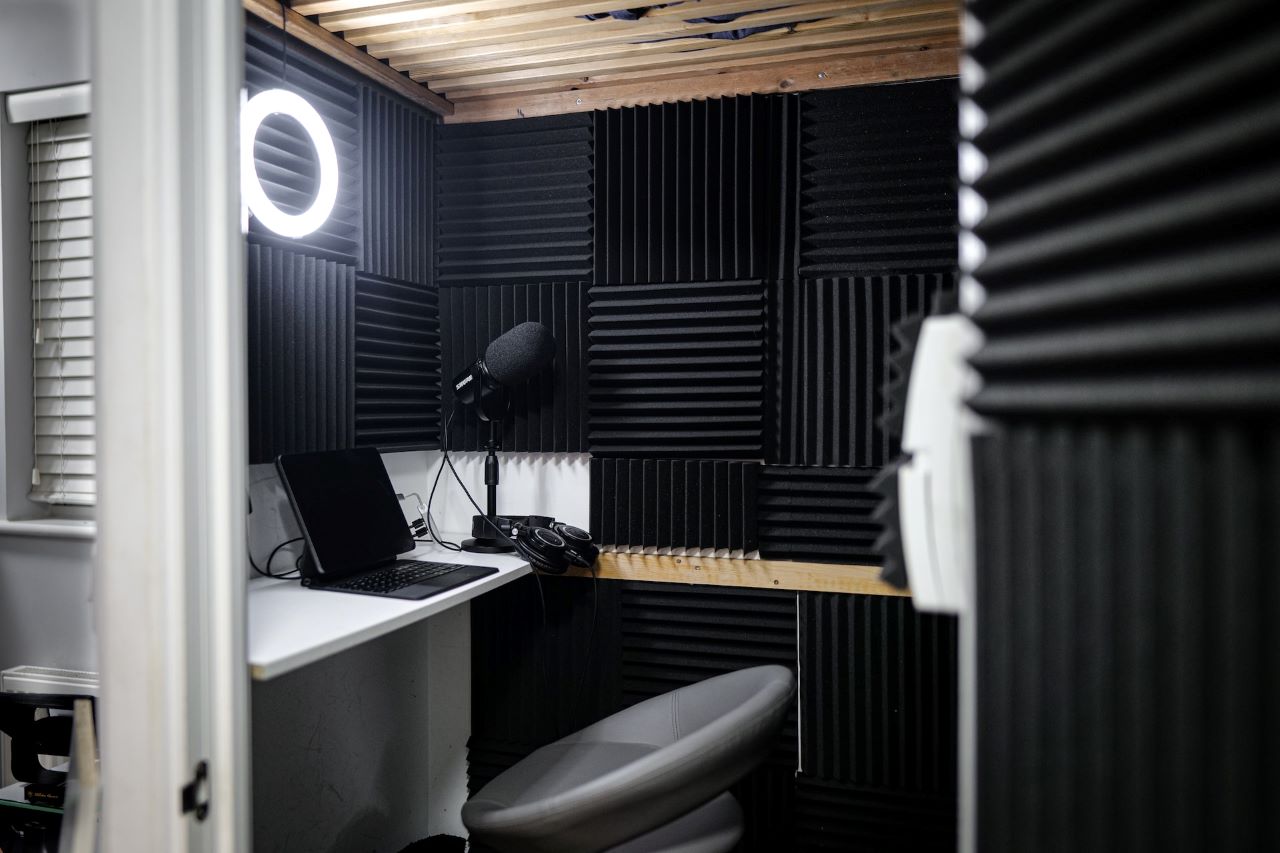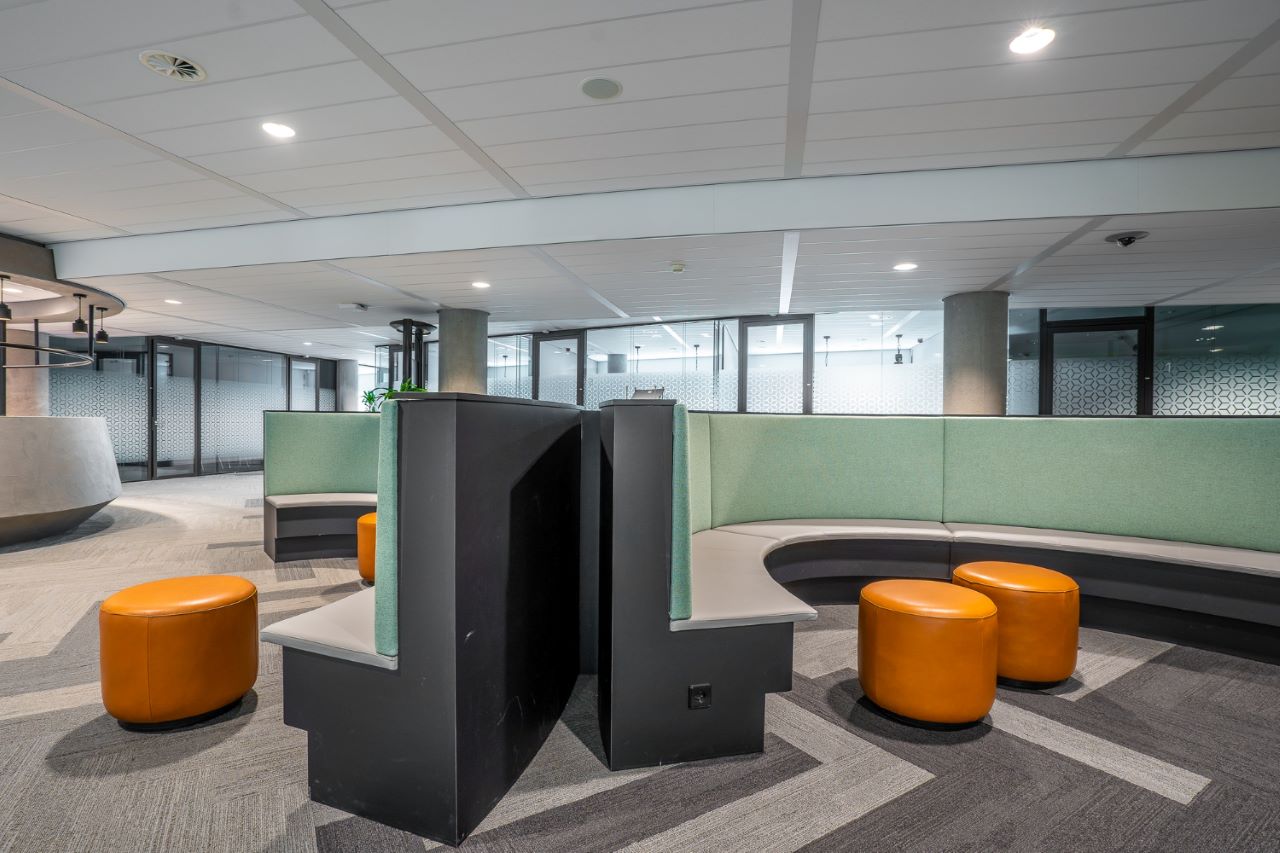When it comes to optimizing the acoustics of a room, whether it’s a home theater, a podcast recording studio, or simply a living space craving better sound quality, the choice of material for acoustic panels is pivotal. Acoustic panels play a crucial role in absorbing and managing sound to reduce echo and reverberation, enhancing the overall auditory experience. However, not all materials are created equal.
In this comprehensive guide, we delve into the world of acoustic panels, exploring various materials used in their construction. From traditional options like fiberglass and mineral wool to more modern solutions like foam panels and wood-based materials, we dissect the pros and cons of each, grounded in real-world applications and practicality. This article aims to arm you with the knowledge to make an informed decision tailored to your specific acoustic needs.
Related: How Much Does It Cost To Soundproof A Room?
Best Material For Acoustic Panels
When selecting the right material for acoustic panels, it’s crucial to consider factors like sound absorption efficiency, durability, aesthetic appeal, and safety. Let’s dive into some of the most commonly used materials, examining their characteristics, advantages, and drawbacks.
Fiberglass
Fiberglass, a staple in acoustic treatment, is made from extremely fine fibers of glass. It has been a go-to material for acoustic panels due to its excellent sound absorption qualities. Fiberglass works by trapping sound waves within its dense network of fibers, effectively dampening noise and reducing echo.
The process of manufacturing fiberglass involves melting glass until it’s extremely pliable, then extruding it through fine holes to create thin fibers. These fibers are then woven together to form the base material for the panels. The density of fiberglass can vary, with higher densities generally offering better sound absorption.
Pros

Photo by James McKinven on Unsplash
- Fiberglass panels are particularly effective at absorbing mid to high-frequency sounds. This quality makes them ideal for environments where clear sound is paramount, such as recording studios and home theaters.
- The material is inherently fire-resistant, which is a significant safety advantage.
- Fiberglass doesn’t degrade easily over time, ensuring long-term acoustical performance with minimal maintenance.
- Fiberglass panels can be covered with various fabrics and designs, allowing for acoustic fabric flexibility in room design.
Cons
- Fiberglass is not biodegradable and poses challenges in recycling, raising concerns about its environmental footprint.
- Due to its irritant nature, professional installation is often recommended, which can add to the overall cost.
Mineral Wool
Mineral wool, often referred to as rock wool or stone wool, is a material made from molten basalt or slag, a byproduct of steel production. It’s known for its exceptional sound absorption capabilities, particularly effective in reducing reverberation and echo in large spaces.
The manufacturing process involves spinning the molten rock or slag into fine fibers, which are then compressed into dense panels or batts. This density of the core material is key to its acoustic properties, as it allows the material to trap and dissipate sound waves effectively. Mineral wool also has a unique fibrous structure that contributes to its sound-dampening capabilities.
Pros
- Excellent at reducing sound reverberation, especially in the lower to mid-frequency ranges. This makes it ideal for use in both commercial and residential buildings.
- Besides its acoustic properties, mineral wool offers significant thermal insulation, contributing to energy efficiency.
- Like fiberglass, mineral wool is naturally resistant to fire, enhancing the safety of the spaces where it is installed.
- Mineral wool is resistant to moisture, preventing the growth of mold and mildew, which is a common issue in some other materials.
Cons
- The fibers of mineral wool can be irritating to the skin and respiratory system during installation, necessitating protective gear.
- Mineral wool panels are heavier than other materials, which can complicate their installation and may require additional structural support.
Foam Panels

Photo by James McKinven on Unsplash
Foam panels, often made from polyurethane or melamine foam, are a popular choice in the world of acoustic treatment. These lightweight panels come in various shapes and sizes, offering both functional and aesthetic appeal. Foam panels are especially known for their ability to absorb high-frequency sounds, which makes them a frequent choice for vocal booths, home studios, and spaces where speech clarity is important.
The structure of foam panels is key to their sound-absorbing capabilities. The open cell structure of the foam allows sound waves to enter and get trapped within the material, thus reducing reverberation and echo. These panels are often available in various profiles, like pyramid, wedge, and egg crate, each offering different aesthetic and acoustic properties for sound-absorbing acoustic paneling.
Pros
- Excellent for controlling echoes and improving speech intelligibility in a room.
- Foam panels are light and can be easily mounted on walls and ceilings without specialized equipment.
- Available in various colors and shapes, allowing for creative and visually appealing room designs.
- They are generally more affordable than other materials like fiberglass or mineral wool, making them a popular choice for budget-conscious users.
Cons
- Foam panels are less effective at absorbing lower-frequency sounds, which may be a drawback in environments where full-spectrum sound control is required.
- Foam panels may degrade or discolor over time, particularly when exposed to light and air, requiring eventual replacement.
Wood And Wood-Based Materials
Wood and wood-based materials, including MDF (Medium Density Fiberboard) and plywood, bring a unique combination of aesthetic appeal and acoustic functionality to the table. These materials are used not only for their sound-absorbing qualities but also for diffusing sound waves, which helps to distribute sound evenly across a room.
The acoustic properties of wood materials depend largely on their density and thickness. Heavier and denser woods tend to absorb lower frequencies better, while lighter woods are more effective with higher frequencies. Additionally, the natural porosity of wood aids in sound absorption. Wood-based acoustic wall panels often come in various decorative patterns and finishes, offering both functionality and style.
Pros

Image by Freepik
- Wood panels offer a natural, elegant look that can enhance the decor of any room.
- Apart from absorption, wood panels are excellent at diffusing sound, ensuring an even distribution of acoustics in a space.
- Wood materials are known for their durability, capable of withstanding wear and tear over many years.
- Wood is a renewable resource, and using sustainably sourced wood can be an eco-friendly option.
Cons
- While effective at certain frequencies, wood may not be as efficient as fiberglass or mineral wool in absorbing a full range of sound frequencies.
- High-quality wood acoustic panel can be more expensive than other materials, making it less accessible for budget-conscious consumers.
- Wood panels may require more maintenance, such as regular dusting and protection from moisture, to retain their appearance and functionality.
Cotton Fiber
Cotton fiber acoustic panels are made from recycled or virgin cotton fibers, offering a sustainable and eco-friendly option in sound absorption materials. These sound-absorbing panels are known for their excellent sound-absorbing capabilities, especially in the mid to high-frequency range. They are often used in environments like classrooms, offices, and residential spaces where reducing echo and improving speech clarity is important.
The manufacturing process involves compressing the cotton fibers into dense batts or panels. The natural texture and density of the material allow it to trap and dissipate sound waves effectively. Cotton fiber panels are also known for their acoustically transparent thermal insulation properties.
Pros
- It is very effective at reducing reverberation and absorbing unwanted noise, particularly in the human speech frequency range.
- Made from renewable resources and often utilizing recycled materials, they are a green choice.
- They are non-toxic and free from irritants, making them safe to handle and install without protective gear.
- Besides acoustic properties, they provide good thermal insulation, adding to their versatility.
Cons
- It may not be as durable as synthetic materials, potentially requiring more frequent replacement.
- It can absorb moisture, which might lead to mold growth if not properly maintained.
- Typically, it is less visually appealing than wood panels and may require additional coverings for aesthetic purposes.
Polyester Fiber

Image by wirestock on Freepik
Polyester fiber panels are a modern solution in acoustic treatments, made from synthetic polyester fibers. These panels are known for their lightweight, easy-to-install nature and effective sound absorption, especially in the mid to high-frequency range.
The production of polyester fiber panels involves bonding synthetic fibers into a dense mat, creating a structure that can trap and reduce sound. These panels often come in various densities and thicknesses, allowing for customization based on acoustic needs. They are a popular choice in commercial spaces, offices, and educational institutions.
Pros
- Good at reducing echoes and improving the acoustic quality of a room.
- It can be easily installed on various surfaces, even with the fabric cover, without the need for heavy-duty hardware.
- Available in different colors and textures, offering more design flexibility.
- Safe to handle and install, posing no risk of skin or respiratory irritation.
Cons
- Being a plastic product, it raises environmental concerns due to its non-biodegradable nature.
- Depending on the treatment, some polyester fiber panels can be flammable.
Conclusion: Harmonizing Spaces With The Ideal Acoustic Material
To wrap up, the journey through the world of acoustic materials reveals a diverse landscape, each with distinct attributes catering to specific acoustic needs. From the high sound absorption qualities of fiberglass and mineral wool, ideal for professional environments, to the lightweight and aesthetically versatile acoustic foam panels suitable for home studios, the options are extensive.
Wood and wood-based materials bring an elegant and natural sound diffusion quality, fitting for spaces where aesthetics are paramount. Cotton fiber offers an eco-friendly choice with commendable sound absorption capabilities, while polyester fiber panels present a modern, easy-to-install option for commercial and educational settings.
Among these, mineral wool emerges as a standout recommendation for its comprehensive benefits. It offers excellent sound dampening, fire resistance, and thermal insulation, making it a versatile option for various settings, including both professional studios and residential areas.
Related: Temporary Soundproof Wall